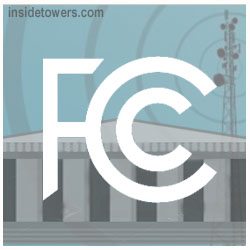
In those portions of the 6 GHz band that are heavily used by point-to-point microwave links, the Commission proposes to allow unlicensed devices to operate where permitted by an automated frequency coordination system and invites comment as to whether this is necessary for devices operated only indoors. In the other portions of the band where licensed mobile services, such as the Broadcast Auxiliary Service and Cable Television Relay Service, operate, the unlicensed devices would be restricted to indoor operations at lower power.
Unlicensed devices, like baby monitors, cordless phones and some of the original WiFi and Bluetooth devices that came to market nearly 20 years ago now use the 2.4 GHz band. During the vote, FCC Commissioner Michael O’Rielly said the exponential growth of wireless data, especially over unlicensed networks, has led to “severe congestion” in unlicensed spectrum bands, primarily 2.4 and 5 GHz. “Consider that total U.S. internet traffic is estimated to increase three-fold between 2016 and 2021, and WiFi networks will grow to carry almost 52 percent of this traffic.”
O’Rielly called the 6 GHz band “a prime location” for unlicensed services because it’s adjacent to 5 GHz “and complements the forthcoming clearing efforts in the C-band downlink band (3.7-4.2 GHz).” Studies in the record show that unlicensed spectrum at 6 GHz can likely be done without causing harmful interference to existing incumbents, he added.
“Drop it like it’s hot…spot. Abraham Linksys. John Wilkes Bluetooth,” said his colleague Commissioner Brendan Carr, listing some of the “more creative” names one might see when searching for a WiFi connection. “The sheer number of network names that pop up confirms what the data tell us. Your neighbors, your family, and nearby businesses are all competing for a relatively limited amount of unlicensed spectrum. And those spectrum bands are getting congested,” he said, in explaining why the agency proposes opening up the 6 GHz band.
Whether at home or work, the final few feet of the “last mile” are often spanned by WiFi, Bluetooth or another unlicensed technology, according to Carr. “Few realize that without WiFi and the unlicensed spectrum it uses, even the best commercial wireless networks would strain to keep up with consumer demand.”
October 24, 2018



